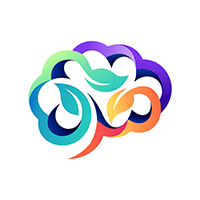Case Studies
Case Study 14: Curriculum Innovation at GCSE
This case study shows how a school ensures that fast-tracked GCSE Mathematics students make the most of the extra time they have in year 11. It also looks at how the school is aiming to stretch gifted English students at key stage 4.
Background
- large, mixed, multicultural comprehensive (11 to 18) with Beacon status
Implementation
- providing additional GCSE qualifications in year 11 for fast-tracked maths students
- giving top English sets the opportunity to achieve three GCSEs (English Language, English literature and media studies) in the time usually allowed for two
Impact
- students achieving a higher number of GCSEs, with good grades
Background
The school is a large, coeducational multicultural comprehensive in the suburbs of a major city. Over 60 percent of its students are from underprivileged wards and over 25 percent of key stage 3 students qualify for free school meals. The school has a large and thriving sixth form and has had Beacon status since January 2000.
For ten years, the school has entered the top maths sets (around 50 students) for GCSE Mathematics in year 10. Grades have always been good, with most students achieving A* to B and none below grade C. In the past, some students who wanted to improve their grades carried on studying GCSE Mathematics in year 11, but most used the released time to do extra work for other subjects.
However, recent funding from Excellence in Cities has provided the school with enough staff and resources to offer the fast-tracked students additional GCSE courses in their year 11 maths time. It has also enabled the school to experiment with offering additional GCSEs for gifted English students.
Implementation
Since September 2000, fast-tracked students who want to continue learning maths or who plan to study the subject at an advanced level are encouraged to take GCSE Statistics in year 11. This prepares them well for the AS Mathematics course and supports other A-level subjects.
Students who are less likely to take the A-level Mathematics route are encouraged to take other subjects to broaden the curriculum. In 2000 they could choose from GCSE Media Studies, GCSE Art (or extra time for those already studying art) or ICT (GCSE short course). In 2001, in place of media studies, the school offered GCSE Photography in year 11. This proved particularly popular, with 17 in the group.
The same year, the school piloted a scheme to offer the top two English sets the opportunity to take GCSE Media Studies alongside their GCSEs in English Language and Literature. This meant studying for three GCSEs in years 10 and 11 in the time allocated for two. The students seem to have enjoyed this approach and there were 60 entries for the triple combination in June 2002.
Recognising that assessing the extra coursework put more pressure on teachers of these groups, the school provided additional funded moderation time.
Impact
Both students and teachers have welcomed the new courses. Gifted students have enjoyed the opportunity to learn a new subject and have achieved good grades. In the school’s view, the changes to the curriculum have gone some way towards meeting the DfES recommendations for an alternative programme for gifted and talented students.
